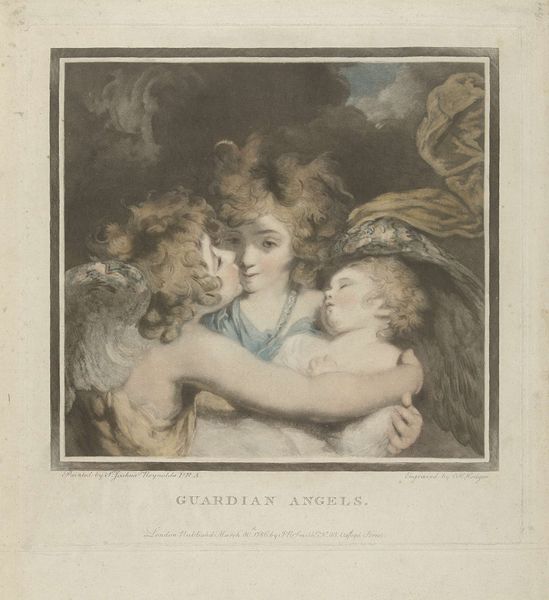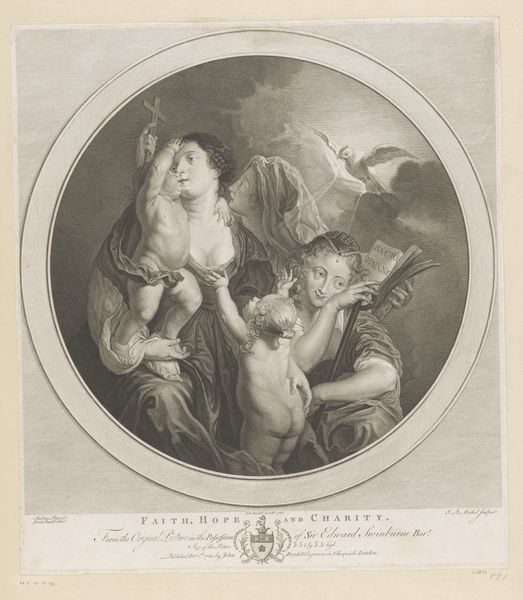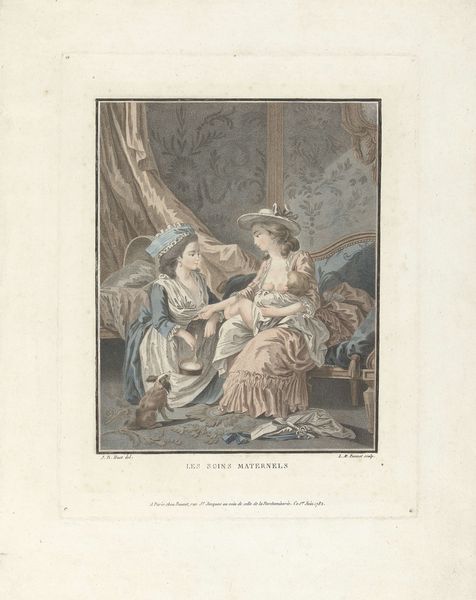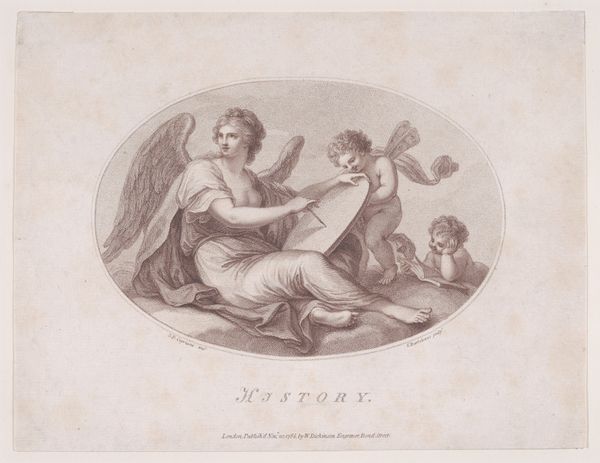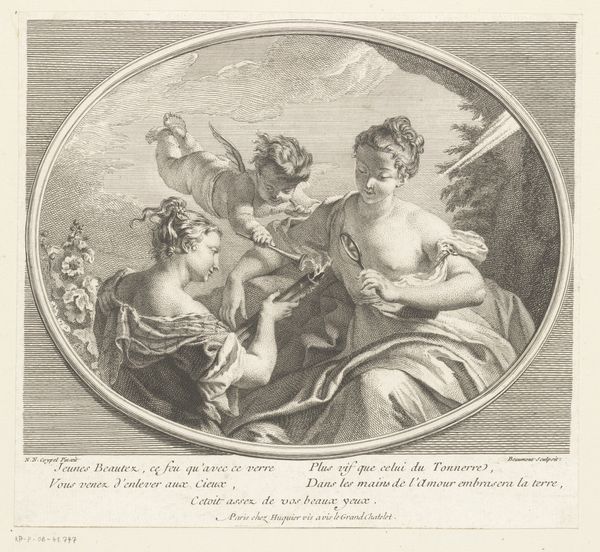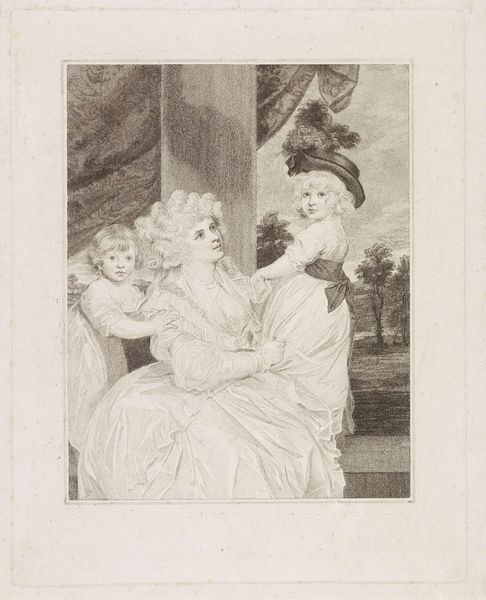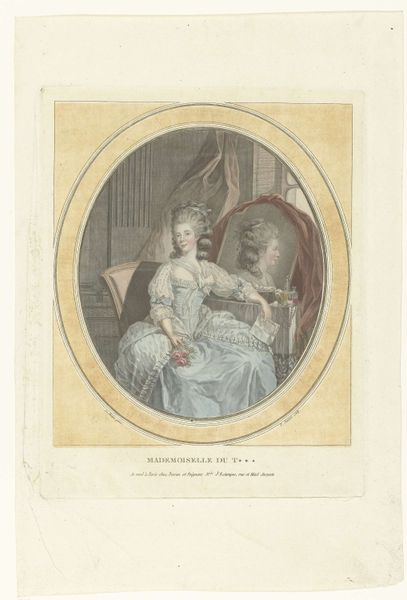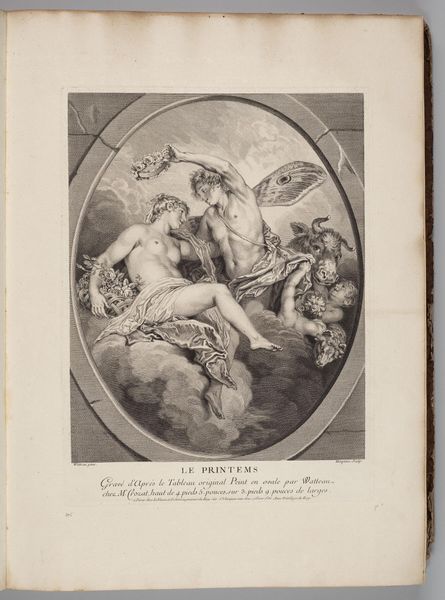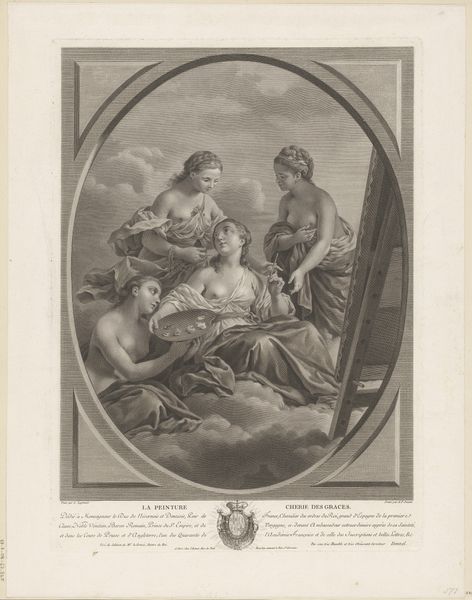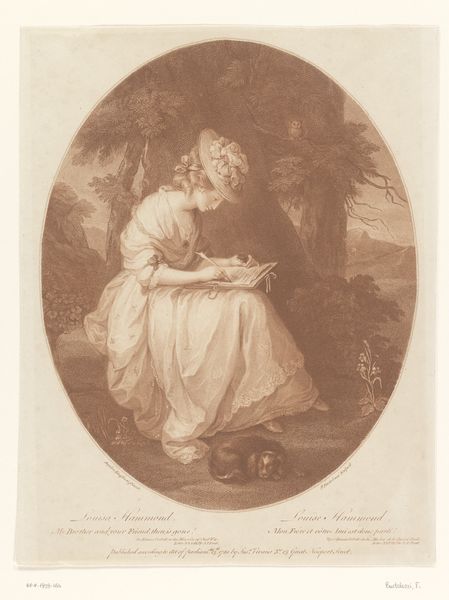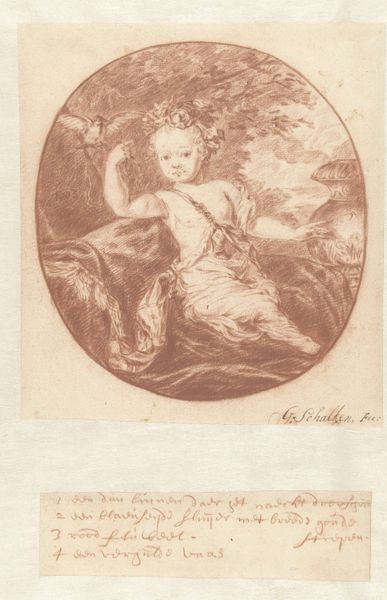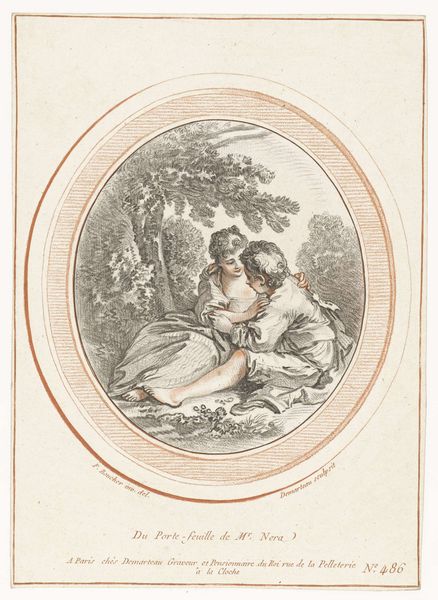
print, engraving
#
portrait
# print
#
figuration
#
romanticism
#
19th century
#
engraving
Dimensions: height 125 mm, width 108 mm
Copyright: Rijks Museum: Open Domain
Curator: Here we have Charles Howard Hodges’ "Two Angels," created in 1799. The artwork, currently held in the Rijksmuseum, is an engraving presented within an ornate, circular frame. The image itself centers on two ethereal figures. Editor: My first thought is just how serene and innocent the figures appear. The soft pastel tones create an almost dreamlike atmosphere. There’s an inherent vulnerability. Curator: Precisely. It's a beautiful example of Romanticism. Note the subtle gradation of light and shadow that models their faces, directing our eyes upward, as if guided by faith. The line work itself has an interesting duality. There’s an economy of line overall, with just enough detail to articulate form, yet the textures—particularly within the wings—suggest great density. Editor: Looking through the lens of gender and representation, it's interesting how the angels are depicted. They possess an almost androgynous beauty, aligning with certain Romantic ideals but also possibly reflecting societal views on gender roles in relation to spirituality and purity at the time. I also see here a visual encoding of power relations; they both look up, submitting. Who are they beholden to? What gazes are being returned here? Curator: That’s a valid point. Hodges employed specific artistic strategies to convey a sense of piety and beauty within established 18th-century conventions, however, the interplay between idealised form and delicate rendering enhances its affective power. It certainly evokes sentimentality and wonder. Editor: I'm always fascinated by how artworks like this—meant to inspire reverence—can also reflect complex and often unquestioned power dynamics. It prompts consideration on how religious imagery perpetuates specific notions about virtue, gender, and submission. And I keep asking myself, in what social and political contexts was Hodges creating this art? Curator: I find it remarkable how a relatively simple composition, presented as an engraving, can spark such different interpretive pathways, revealing the multilayered aspects inherent within representational imagery. Editor: Indeed, engaging with these nuances gives us a more profound grasp of our art history.
Comments
No comments
Be the first to comment and join the conversation on the ultimate creative platform.
